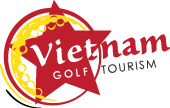Advancing impressive growth
A welcome ceremony for the 15 millionth foreign tourist to visit Vietnam was held in Ha Long City, in the northern province of Quang Ninh, on December 19, marking the first time that Vietnam’s hospitality sector has exceeded the target of welcoming 15 million international visitors a year.
According to the Vietnam National Administration of Tourism, the number of domestic tourists in 2018 is expected to reach over 80 million and the total revenue from tourists in 2018 will possibly surpass VND 600 trillion. Although the sector’s growth rate has slightly slowed down in comparison to 2017, this is the third consecutive year in which Vietnam’s tourism has recorded impressive growth of more than 20% per year.
In 2018, the image of Vietnam has been widely promoted around the world. Vietnam was ranked among the world’s top 10 fastest-growing tourist destinations in 2017, accordingly to the World Tourism Organisation. In particular, the country was also listed among the world’s top destinations in Asia and Oceania by World Travel Awards. In addition, two resorts in Da Nang won the “Luxury Family Beach Resort” and the “Luxury Romantic Hotel” titles at the prestigious 2018 World Luxury Hotel Awards. Not to mention that Vietnam has also earned the “Asia’s best golf destination 2018” title for two consecutive years in a row.
Many tourist attractions in the country have been named among the top destinations by a number of acclaimed travel magazines. For example, the Golden Bridge in Da Nang, which was put into operation in June 2018, went viral on CNN as one of top 124 destinations in 2018.
Vietnam’s tourism market has also attracted great interest and attraction from international airlines, with around US$15 billion being poured into tourist projects as of 2017. Together with billions of US dollars coming from major domestic groups, the investment has brought a new appearance for the hospitality sector as the infrastructure has been improved and more luxury coastal resorts and complexes have been built and inaugurated.
Most recently, Hon Gai international port in Ha Long city, Quang Ninh province, was put into operation in November. It was built under the private-public partnership form between Sun Group and Quang Ninh province with a total investment of more than VND1.1 trillion. It was designed to be able to receive two cruise ships with a capacity of up to 225,000 GT and serve up to 8,400 passengers at the same time. The port welcomed its first international cruise on November 27, which carried more than 2,000 passengers and nearly 1,000 crew members on board.
The inauguration of the port has opened new steps for the development of Quang Ninh province, while facilitating the cooperation and development in tourism at an international level.
In the common trend of digital technology, more and more Vietnamese businesses have applied technological advancements in their operations by integrating their services on mobile devices and digitalising their data to better serve customers.
Prominent among them include the launch of a smart tourism information portal called VTV Travel, an audio guide service for tourists visiting Hanoi’s Temple of Literature, and an automatic guiding system for smart phone users to support visitors at the Thang Long Imperial Citadel. Localities such as Ninh Binh and Phu Yen have developed information portals and smart travel applications on mobile devices, making it easier for vacationers to explore the localities.
Delegates at a ceremony held in Ha Long City, Quang Ninh province, on December 19 to welcome the 15 millionth foreign tourist to Vietnam. (Photo: vnexpress.net)
Seizing breakthrough opportunities
Despite encouraging achievements over the past few years, Vietnamese tourism has revealed certain shortcomings and limitations in its operations, which might pose difficulties for its further development in the near future.
International experts attending the recent first Travel & Tourism Summit said that Vietnam could take only seven years to reach 30 million international arrivals by 2025 (while Thailand might take 20 years to complete the target) as long as the country’s tourism infrastructure is properly invested in.
One of the factors that hinder the development of Vietnam’s tourism is the “bottleneck” of poor infrastructure. The airports in Vietnam are overloaded. 21 airports in the country currently have a combined capacity of serving 75 million passengers per year, just equivalent to the single capacity of Changi Airport in Singapore or Kuala Lumpur in Malaysia alone.
However, these airports have actually served 95 million passengers in 2017 and up to 105 million in 2018. Meanwhile, the upgrading of the airports is sluggish.
In order to remove this “bottleneck”, experts have suggested that the State develops a solution to encourage the private sector to participate in building new airports, and upgrading the infrastructure of current ones.
Vietnamese tourism’s obstacles also include weak human resources, low capacity of managing destinations, and developing tourism along with environmental protection.
In an effort to address the problems, the Prime Minister had just approved a project to restructure the tourism sector, which focuses on potential markets and developing human resources, in early December.
The project aims to increase the tourism sector revenue to US$45 billion, more than almost double the amount from last year, contributing 10% to the GDP and creating 6 million jobs by 2025, including 2 million direct jobs. Furthermore, the sector hopes to serve 32 million foreign tourists and more than 130 million domestic visitors. The tourism product system is expected to be shaped, and smart tourism will be applied widely.
The Government pledges to create favourable conditions for visa policy, facilitating aviation industry, attracting FDI investment into tourism sector in order to bring into full play the available advantages of the natural resources and heritage values.
The Prime Minister also approved a master plan on the use of information technology in promoting tourism from 2018 – 2020, with a vision to 2025. The plan aims to create a digital database of tour guides, travel agencies, hotels and lodging providers nationwide, as well as of tourist complexes and destinations and tourists by 2020. A range of mobile applications will be developed to provide tourists with all they need to know about the tourist destinations and tourist services and products, while audio guides will also be available in popular languages.
By 2025, Vietnam will develop a smart eco-tourism environment in tandem with smart cities and foster the use of artificial intelligence, virtual assistants and other advanced technology to better serve tourists and support the operations of tour operators and tourism authorities.
Developing tourism requires not only the efforts of those working in the sector alone but also the intense involvement of the relevant agencies such as aviation, customs, trade and tariff system, as well as the business community and the entire society.
By mobilising the full participation from all parties in realising freshly-approved projects and programmes facilitating the tourism sector’s development, Vietnam’s hospitality will obviously gain further breakthroughs in the years to come.
The article "Tourism sector seizes opportunities to foster development" was originally published on http://en.nhandan.com.vn/travel/item/6979802-tourism-sector-seizes-opportunities-to-foster-development.html





